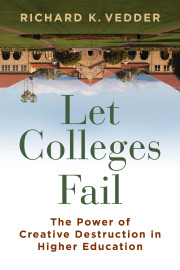For more than half a century, I have been studying and writing about human migration, both internal (i.e., movement of Americans between states) and international (immigration patterns). To me, migration provides the best single indicator of the quality of life in a locale—if people are moving into an area, they are indicating they sense that their new home will be better than their old one.
The misery of totalitarian communist societies like Soviet-era East Germany or contemporary North Korea is vividly indicated by the barriers erected to keep people from fleeing, just as wall building on the American southern border is a means of restricting entry into our nation. Easily the world’s largest human international migration has been to the United States and is probably the best empirical evidence of American exceptionalism.
This becomes relevant in assessing the current American presidential election. The Democratic candidates, Vice President Kamala Harris and Gov. Tim Walz, are associated with the highly progressive Left. Harris by some indicators was more leftist in her years in the U.S. Senate than Bernie Sanders, and Walz as Minnesota’s leader has aggressively increased low-income entitlements, championed gender changes, slow-walked needed National Guard support during the George Floyd riots, and raised taxes on corporations and the affluent despite budget surpluses, resulting in low economic growth.
The political orientation of the Republican candidates—former President Donald Trump and Sen. J.D. Vance—is perhaps somewhat murkier, but based on Trump’s presidency with its tax cuts, appointments of conservative justices, and rolling back of some aggressive actions of the administrative state, it is probably safe to say it is distinctly less progressive and even arguably somewhat conservative.
Income Taxation Pushes Americans to Leave
I spent a day recently scouring U.S. Census Bureau data on the internal migration flows of Americans in 2022. To start, with the help of a high-achieving teenage son of Polish immigrants, Nicholas Jadwisienczak, I separated states into three categories: red (Republican-leaning), blue (Democratic-oriented), or swing (pretty evenly divided). Instead of looking only at presidential and congressional elections, I included gubernatorial and state legislative elections. I identified 25 red states, 20 blue states, and five swing states: Arizona, Georgia, New Hampshire, Virginia, and Wisconsin (note the absence of some states that pundits have considered major battleground states in this election, such as Pennsylvania and Michigan, which we identified as blue states).
In 2022, while 3,169,985 American inhabitants moved into the blue states, well over 900,000 more, 4,098,825, left—considerable net out-migration. California, New York, Illinois, and New Jersey, with their 80 million inhabitants, all had enormous net out-migration—totaling over 800,000. By contrast, every hour, day and night, all year long, 50 more persons on average moved into conservative Texas or Florida than moved out.
One hugely important factor in these trends: Income taxation. Progressive California has a top income tax rate of over 13 percent, while conservative Texas or Florida have no tax. Is it any wonder Elon Musk moved from California to Texas?
The Harris Campaign Could Be in For More Bad News
One blue state which historically has had no income tax is Washington, home of such high-tech powerhouses as Microsoft and Amazon. In 2021, the leftish state government adopted a capital gains tax potentially imposing massive taxation on individuals like Bill Gates or Jeff Bezos. Is it any wonder, then, that Washington in 2022 reported modest net out-migration despite serving as headquarters for some of America’s most successful corporations?
What are the implications for the presidential race? If I were Trump, I would mute the personal insults and disputes over the size of campaign rallies and concentrate on policies relating to things concerning Americans, such as progressive policies regarding illegal immigration, persistent inflation and excessive crime and violence in our cities. If I were Harris, I would continue to try to avoid interviews and specific details of her generally unpopular (if migration statistics are a sound guide) progressive policies. Her big challenge: the Sept. 10 debate and probable Trump calls for more debates in September and October.
Putting on my economist hat, I would also note that there should be three more releases by the Bureau of Labor Statistics of the monthly employment report before the election, the last just ahead of the final crucial weekend. Until recently, those releases have favored the Democrats, with generally low unemployment and robust job creation. However, recently there has been a noticeable rise in unemployment and modest numbers of new jobs. If that were to continue through these closing months, the impact could be material. Or as top Bill Clinton strategist James Carville memorably once said, “It’s the economy, stupid.”













